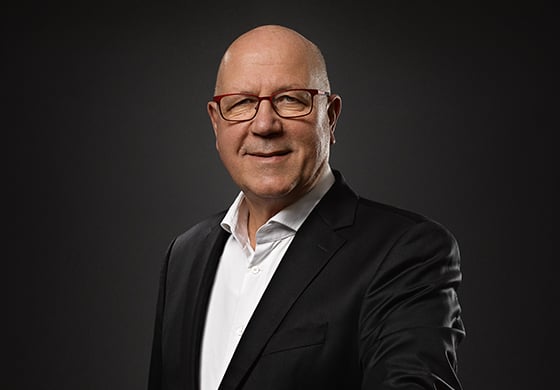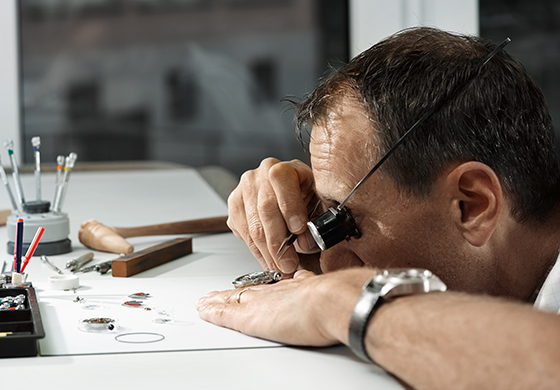The Next Chapter
Over the last few years, Oris watches has been steadily reclaiming its proud watchmaking heritage, a story that continues this year.
In a recent published article Ulrich W Herzog the Chairman of Oris watches had the following to say about Oris watches and its journey:
In many walks of life, we hear tales of success or sudden rises to fame accompanied by a sentiment that sounds something like this: ‘If you’d told me a few years ago I’d be where I am now, I would never have believed you.’ It s much harder to make such a claim in watchmaking against the backdrop of a change in fortune. Creating a watch from scratch takes many years, so in theory you know whats coming. But even then, there are no guarantees, no matter how confident you are.
 The picture at Oris has changed dramatically over the last few years, as we;d hoped it would. The seeds of our plan to ‘take back watchmaking’ after a 35-year in-house movement development hiatus were planted almost a decade ago when we began the development of the calibre 110, launched in our 110th anniversary year in 2014. The fruits of this plan are becoming more apparent with each passing year. Last year, we unveiled Calibre 111, a core collection piece that took the limited edition anniversary watch’s 10-day power reserve and non-linear power reserve indicator and added a date function to create another unique combination of complications. We’ve continued on that path this year with the launch of Calibre 112, adding a second time zone with a day/night indicator.
The picture at Oris has changed dramatically over the last few years, as we;d hoped it would. The seeds of our plan to ‘take back watchmaking’ after a 35-year in-house movement development hiatus were planted almost a decade ago when we began the development of the calibre 110, launched in our 110th anniversary year in 2014. The fruits of this plan are becoming more apparent with each passing year. Last year, we unveiled Calibre 111, a core collection piece that took the limited edition anniversary watch’s 10-day power reserve and non-linear power reserve indicator and added a date function to create another unique combination of complications. We’ve continued on that path this year with the launch of Calibre 112, adding a second time zone with a day/night indicator.
The common perception in watchmaking particularly when you’re an independent Swiss company as we are, is that developing such innovative calibres is prohibitively expensive and that these costs have to be assumed by the consumer. Oris has never operated in that way. In 1904, our founders introduced the philosophy of making the best watch at the best possible price, and the same approach continues to inform everything we do today, hence our ‘real watches for real people’ company mantra.
Having developed the Calibre 110 in-house, we worked with Switzerland’s finest watch parts manufacturers to create an exceptionally, industrially produced movement that conforms to our exacting standards. The same is true of Calibres 111 and 112, and indeed of every watch in the Oris watches collection, whether in our Culture, Diving, Aviation or Motor Sport worlds. This story is making headlines all over the world – but I can’t say I didn’t expect it. Quality will always endure, particularly when it’s delivered at a reasonable cost. It’s now my enormous pleasure to invite you to explore exactly what I mean by that in this booklet. You’ll discover our innovative new watches and meet our inspirational ambassadors, all of whom put our watches through their paces ‘at work’. I hope you enjoy learning more about them, and should you choose to invest in an Oris watch, it’s my wish that it brings you a lifetime of pleasure.
Taking Back Watchmaking
 Back in March 2014 the watch world turned its attention to Basel’s spring watch fair. At Oris watches, the sense of anticipation is reaching fever pitch. For the last six years, the company has been developing a new calibre, its first since the late 1970’s, and launch is only days away. At the fair, Calibre 110 is launched to the world, a unique complication featuring a 10-day power reserve and a non-linear power reserve indicator. Its release times with the company’s 110th anniversary. Oris watches, the independent watchmaker that was once on of Switzerland’s biggest movement manufacturers, is back. Rewind 35 years to the end of the 1970s, and the picture was very different. At the time the Swiss watch industry was in a desperate state, decimated by what has since become known as ‘ The Quartz Crisis’. Oris watches, like so many others, was suffering. The influx of cheap, fashionable quartz watches from the Far East had pushed almost 1000 Swiss companies out of business, and left two thirds of the workforce redundant. The industry, once so strong, was on its knees.
Back in March 2014 the watch world turned its attention to Basel’s spring watch fair. At Oris watches, the sense of anticipation is reaching fever pitch. For the last six years, the company has been developing a new calibre, its first since the late 1970’s, and launch is only days away. At the fair, Calibre 110 is launched to the world, a unique complication featuring a 10-day power reserve and a non-linear power reserve indicator. Its release times with the company’s 110th anniversary. Oris watches, the independent watchmaker that was once on of Switzerland’s biggest movement manufacturers, is back. Rewind 35 years to the end of the 1970s, and the picture was very different. At the time the Swiss watch industry was in a desperate state, decimated by what has since become known as ‘ The Quartz Crisis’. Oris watches, like so many others, was suffering. The influx of cheap, fashionable quartz watches from the Far East had pushed almost 1000 Swiss companies out of business, and left two thirds of the workforce redundant. The industry, once so strong, was on its knees.
Oris watches has once been at the forefront of movement development and manufacturing, introducing 279 calibres into the market between 1904 and 1981. In 1970, it was one of the 10 largest watchmaking companies in the world, employing 800 people across a network of sites.
But the crisis reduced its staff, its capacity and its ability to develop movements. For over 30 years, it worked with third-party suppliers, developing complications and modules in-house, but never to a point where it could claim ownership of an entire movement. Basel 2014 changed all that. Calibre 110 would become a marker in the sand – a symbol of Oris’s watchmaking heritage and its future ambitions. In the two years since, Calibre 110 has been followed by Calibres 111 and 112. All three are hand-wound and features a combination never seen before in watchmaking. On top of a huge 10-day power reserve, they all feature an Oris-developed and patented non-linear power reserve indicator that shows the power remaining in ever greater detail as the time to rewind the watch approaches.
Oris watches utilises cutting-edge industrial manufacturing techniques to produce Calibre 112, never forgetting the invaluable role of the skilled watchmaker.
These three calibres have put Oris back on the map and helped the company begin to take back watchmaking, restoring a great tradition. The future looks bright. But what does it mean to ‘take back watchmaking’? Although Oris is still based on the same site in Holstein where it was founded over 110 years ago, the company is not yet producing all the parts associated with a mechanical watch. Instead, it is working with Switzerland’s best manufacturers, each of whom has been specially commissioned to produce parts according to Oris’s strict philosophy – to make the best watch at the best possible price.

How it works – Artelier Calibre 112
Oris Artelier Calibre 112 is the most complicated watch in the ORis collection. Inside it is a Calibre 112, a series-produced, hand-wound calibre that features a 10-day power reserve, a non-linear power reserve indicator, a date, and a second time zone with a day / night indicator. This is how it works.
All the Gear
Behind the Oris-patented non-linear power reserve indicator is a ‘worm gear’, a unique development seen only in Oris’s trio of in-house calibres. It controls the speed at which the power reserve indicator moves around the dial.
In the Zone
Calibre 112 is the first of Oris’s new generation in-house movements to feature a second time zone, indicated on a subdial at 12 o’clock via both an hour and minute hand. These are set via the winding crown, and allow the wearer to keep track of home time while using the central hands to show local time. To make the reading as clear as possible, Oris has also added a say/night indicator, displayed via two apertures.
Power Tool
The Artelier Calibre 112’s hand-wound movement is equipped with an oversized single barrel that provides the watch with its vast 10-day power reserve. That reserve is recorded via an Oris-developed non-linear power reserve indicator on the sub dial at 3 o’clock. At the top of the indicator, the days are close together, and then further apart as the hand moves clockwise around the scale. This means th e power reserve is indicated with ever greater accuracy as the time to rewind the watch approaches. Oris has patented this innovation.





